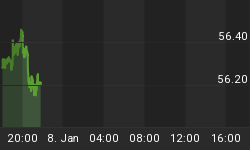I have been writing about risk management for quite a while now in the newsletter and want to be a little more explicit about it now here on the site. We'll use weekly charts to illustrate.
The nominal gold price has done nothing unusual, even after yesterday's hard decline to the 35 week exponential moving average. If it breaks through that level, then a bearish sign will be in place and the next stop would likely be the noted support zone in the low 1600s.
Gold in Euros is in a bullish Ascending Triangle, but this week's decline has bumped the gold price below the 40 week EMA and to the lower, ascending line of the triangle. The purple EMA 60 must hold to avoid a bearish signal.
The HUI Gold Bugs index suffered an important breakdown when the 'neckline' to the 2011 topping pattern was broken. This has opened up a Pandora's Box to lower prices. The neckline was something I considered important support and now that it has failed, gold stock bulls are left grappling with myriad possibilities as to where the next lasting support level will come. If and when HUI retakes and holds this neckline, the risk profile improves greatly.
A bright spot - if you can call it that - is that the HUI-Gold Ratio (HGR) remains in its state of higher lows, indicating that where ever the sector bottoms, a buying opportunity would be at hand if (and this is an absolutely critical if) the HGR remains intact. If it does not, then the bull/buying opportunity case is busted.
Yesterday, the HGR held strong as the HUI made a slight positive while gold got hammered again, for the 3rd time since the last CoT data release. It must hold above the early November low.
The chart above shows what the net commercial short position 'should' look like at an important bottom (ref. 2008). Commercials were sufficiently benign and large speculators were nearly as bearish as they get at the bottom last summer. But this time the CoT has thus far refused to relent. Of course, including yesterday's affair there have been 3 gold and silver smash downs since the latest CoT data release, which only includes the data as of November 27.
The data simply must be shown to have improved markedly (as of yesterday, Tues. Dec. 4th) come Friday's 3:30 ET release. No ifs ands or buts.
Summary
It would not be my style to start making too loud a racket about risk now that the predictable damage is well in progress. Risk of a 'normal' correction was in play back in September as precious metals sector sentiment became over bought and over bullish. NFTRH noted as much at the time.
The correction became abnormal when the HUI lost 460 and with the CoT's stubborn refusal to reverse. HUI-Gold Ratio remains a positive indicator as long as it holds its higher low to the mid-November low. Yesterday was a good start. Sentiment has improved as gold bugs have gotten more bearish over the last 2 months, but this negativity is not at an extreme, which it usually is important bottoms. Also, going just by eye, too many people appear to be trying to call a bottom.
The precious metals sector made some good signs yesterday, but there has been technical damage on the gold stocks and the metals are at an important juncture. The metals are positive today in pre-US open (12/5) in what appears to be follow through to yesterday's positive signs.
But there is a big mess happening in Washington and we are still within the noisy time frame that has been expected into mid-December and the coming FOMC meeting. Risk management continues to be indicated as long as HUI remains below the neckline. Additionally, gold must hold the weekly EMA 35 to avoid a date with the low 1600s and it must hold the Ascending Triangle in Euros to remain bullish there.
We cannot predict the future, but we sure can use simple parameters to manage risk. On the bigger picture, we are watching for an 'inflationary' rally to continue in the broad markets, but putting aside whatever unofficially official manipulation may be happening in the precious metals, monetary data like adjusted money supply will eventually tell the tale. There is a man named Prechter, and he talks a lot about the undeniable forces of deflation. The US dollar looks sick and this could anticipate an inflationary attempt, but let's just keep an eye on the Fed and its ability or will to inflate the real money supply.
Risk management is always in style, especially until some of these parameters start becoming more clear and/or we get through the first half of December in good shape.





















